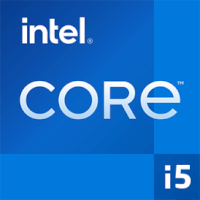

| Apple M1 | Intel Core i5-1135G7 | |
| 3.20 GHz | Frequency | 2.40 GHz |
| 3.20 GHz | Turbo (1 Core) | 4.20 GHz |
| 2.06 GHz | Turbo (All Cores) | 3.80 GHz |
| 8 | Cores | 4 |
| No | Hyperthreading ? | Yes |
| No | Overclocking ? | No |
| hybrid (big.LITTLE) | Core architecture | normal |
| Apple M1 (8 Core) | GPU | Intel Iris Xe Graphics 80 (Tiger Lake G7) |
| DirectX Version | 12 | |
| 2 | Max. displays | 4 |
| LPDDR4X-4266 | Memory | DDR4-3200 |
| 2 | Memory channels | 2 |
| 16 GB | Max. Memory | 64 GB |
| No | ECC | No |
| 16.00 MB | L2 Cache | -- |
| -- | L3 Cache | 8.00 MB |
| 4.0 | PCIe version | 4.0 |
| PCIe lanes | 4 | |
| 5 nm | Technology | 10 nm |
| N/A | Socket | BGA 1526 |
| 15 W | TDP | 15 W |
| Apple Virtualization Framework | Virtualization | VT-x, VT-x EPT, VT-d |
| Q4/2020 | Release date | Q3/2020 |
| show more detail | show more detail |
Cinebench R23 is the successor of Cinebench R20 and is also based on the Cinema 4 Suite. Cinema 4 is a worldwide used software to create 3D forms. The single-core test only uses one CPU core, the amount of cores or hyperthreading ability doesn't count.
Cinebench R23 is the successor of Cinebench R20 and is also based on the Cinema 4 Suite. Cinema 4 is a worldwide used software to create 3D forms. The multi-core test involves all CPU cores and taks a big advantage of hyperthreading.
Cinebench R20 is the successor of Cinebench R15 and is also based on the Cinema 4 Suite. Cinema 4 is a worldwide used software to create 3D forms. The single-core test only uses one CPU core, the amount of cores or hyperthreading ability doesn't count.
Cinebench R20 is the successor of Cinebench R15 and is also based on the Cinema 4 Suite. Cinema 4 is a worldwide used software to create 3D forms. The multi-core test involves all CPU cores and taks a big advantage of hyperthreading.
Geekbench 5 is a cross plattform benchmark that heavily uses the systems memory. A fast memory will push the result a lot. The single-core test only uses one CPU core, the amount of cores or hyperthreading ability doesn't count.
Geekbench 5 is a cross plattform benchmark that heavily uses the systems memory. A fast memory will push the result a lot. The multi-core test involves all CPU cores and taks a big advantage of hyperthreading.
The theoretical computing performance of the internal graphics unit of the processor with simple accuracy (32 bit) in GFLOPS. GFLOPS indicates how many billion floating point operations the iGPU can perform per second.
Blender is a free 3D graphics software for rendering (creating) 3D bodies, which can also be textured and animated in the software. The Blender benchmark creates predefined scenes and measures the time (s) required for the entire scene. The shorter the time required, the better. We selected bmw27 as the benchmark scene.
Some of the CPUs listed below have been benchmarked by CPU-Benchmark. However the majority of CPUs have not been tested and the results have been estimated by a CPU-Benchmark’s secret proprietary formula. As such they do not accurately reflect the actual Passmark CPU mark values and are not endorsed by PassMark Software Pty Ltd.